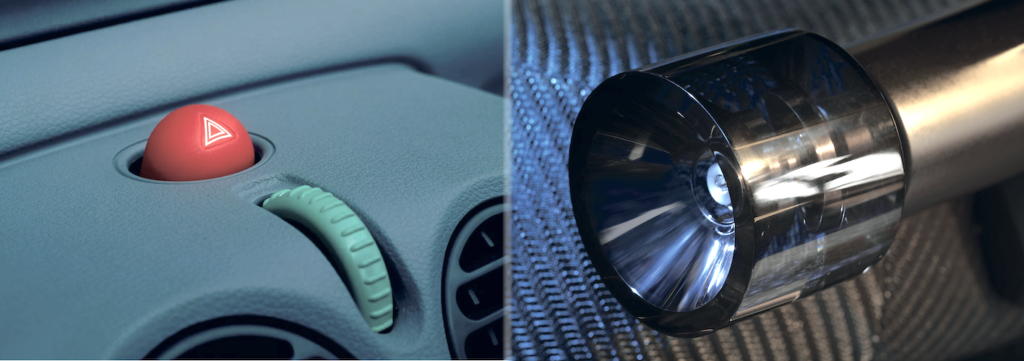
In 2026, the new 100%-electric Twingo will hit the market with a target starting price of under €20,000. Designed in France, produced in Europe on the AmpR Small platform, this newcomer takes up the mischievous spirit of the very first generation of 1992 (marketed in 1993), a little chip then forgotten in an anonymous cubicle and pushed towards the light when Patrick le Quément succeeded in bringing this project to life despite certain internal distrusts. An understatement…
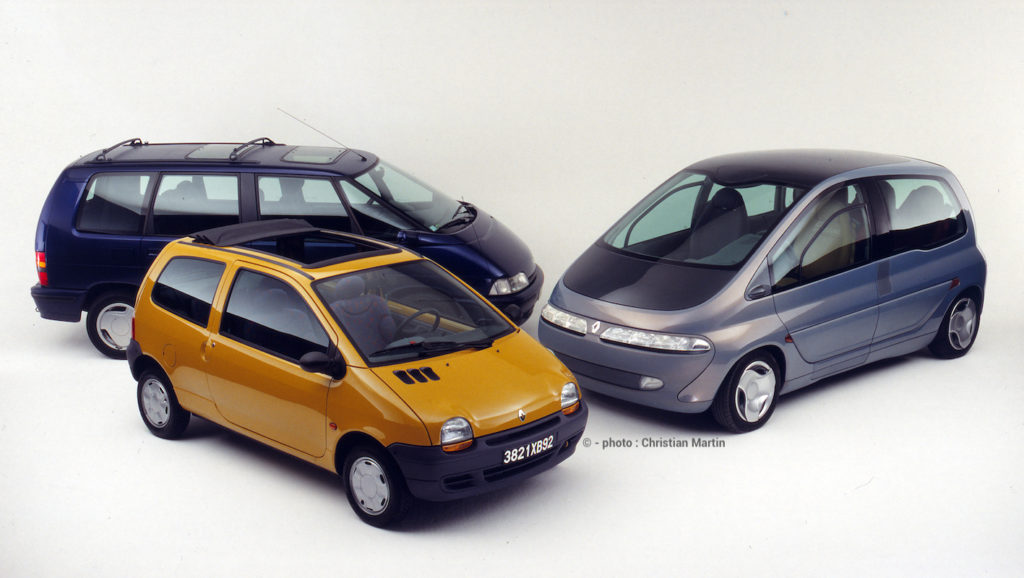
Twingo has become a companion for many of us, and one we’ve come across often over the last three decades. Chirpy, smiling and smartly offering the bare necessities, it made its mark in an environment where ABS and GPS were still a thing of the past, and yellow headlights had just been abolished. This chip off the old block (like the DS in its day) amazed at the 1992 Paris Motor Show above, just like the Citroën reference in 1955.
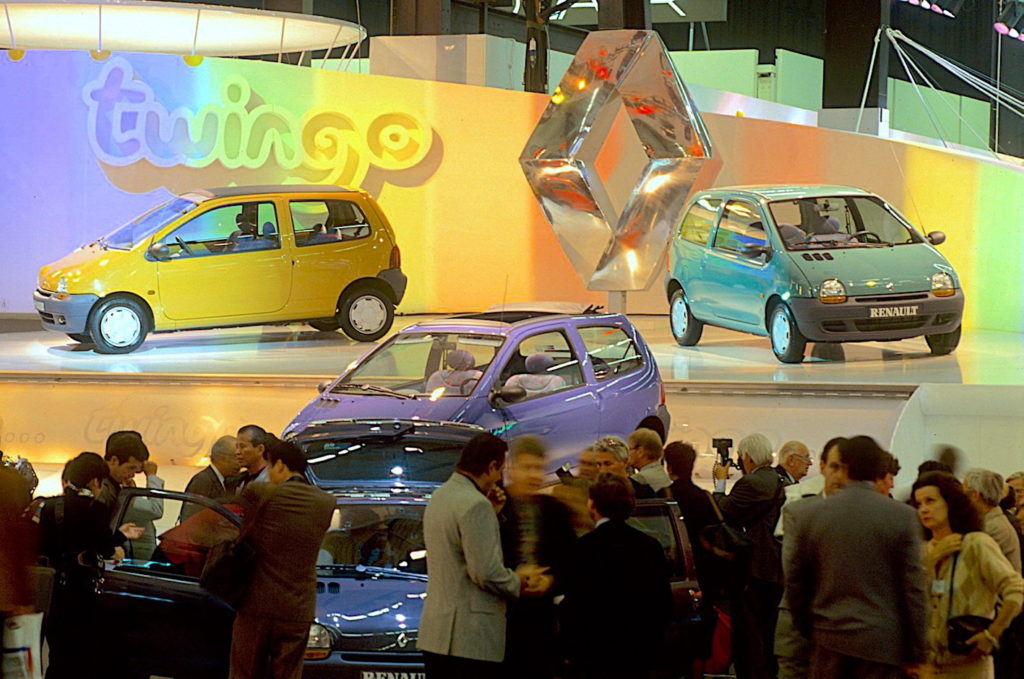
Today, Renault is virtually unveiling the production version you’ll be able to drive in two years’ time. On the pretext of revealing a cabin that respects the DNA of the first-generation Twingo, Renault is also unveiling a design that is now (almost?) complete. And we’re going to find some very interesting ideas in these lines and volumes.
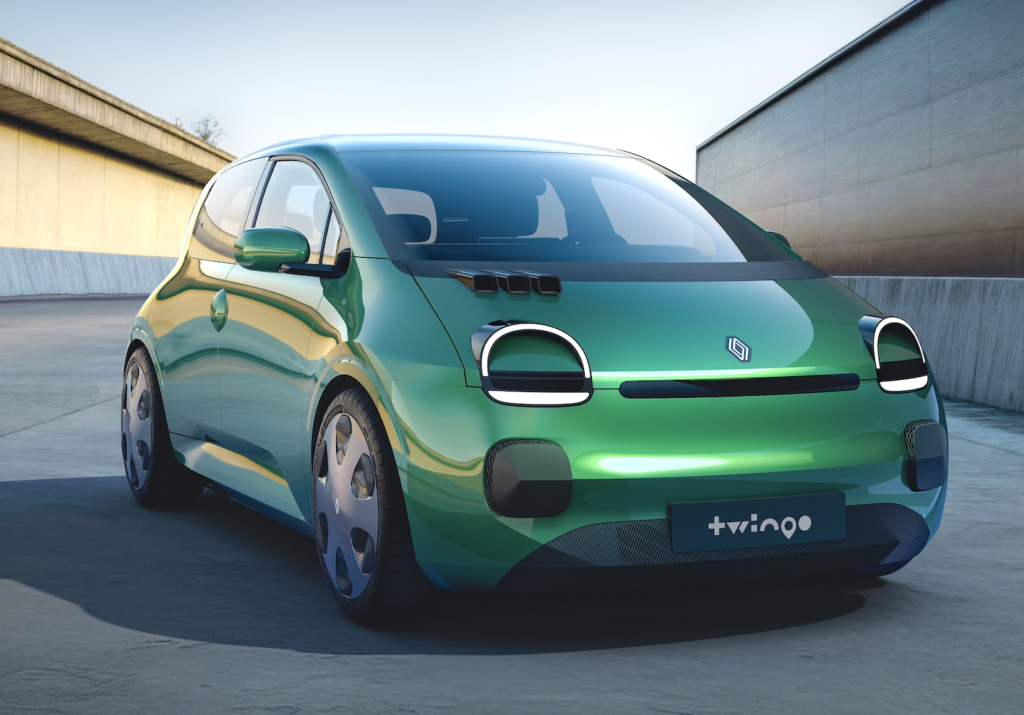
Since it’s the interior that’s completely new, we’d like to point out the element that we find most interesting in terms of design: the inner perimeter of the windshield (below, outlined on the left with the red dotted lines), which covers the A-pillars, integrates the sun visors and smiles at passers-by with its “AIR” lettering printed on the lower part…
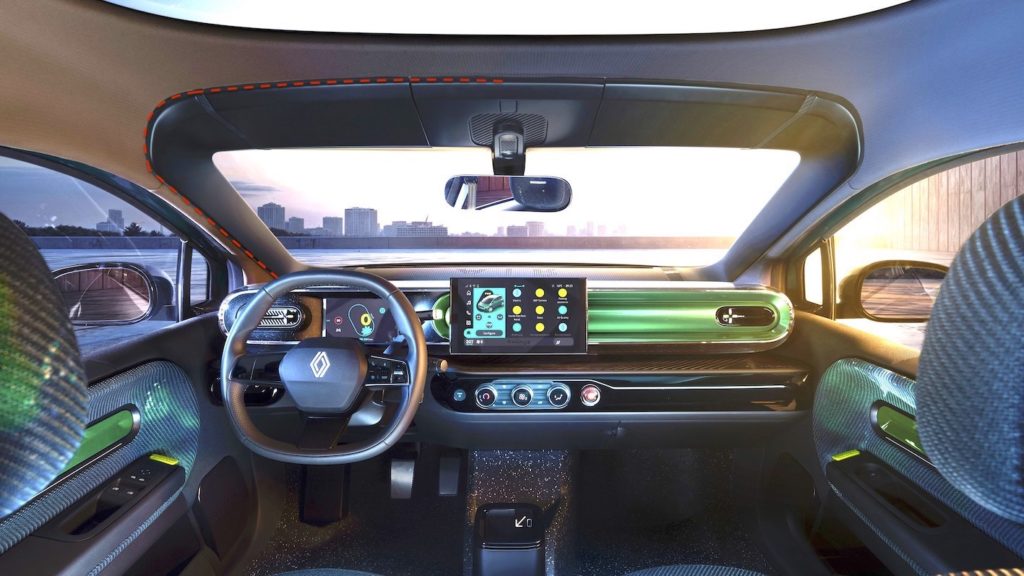
This simple assembly of just a few parts is a real design idea: integration of functions, aesthetics and no doubt adding an improvement in “perceived quality” at this level of assembly, highly visible to front passengers. This element seems to have been designed for series production, and it should make your journey very cinematic, on the big screen!
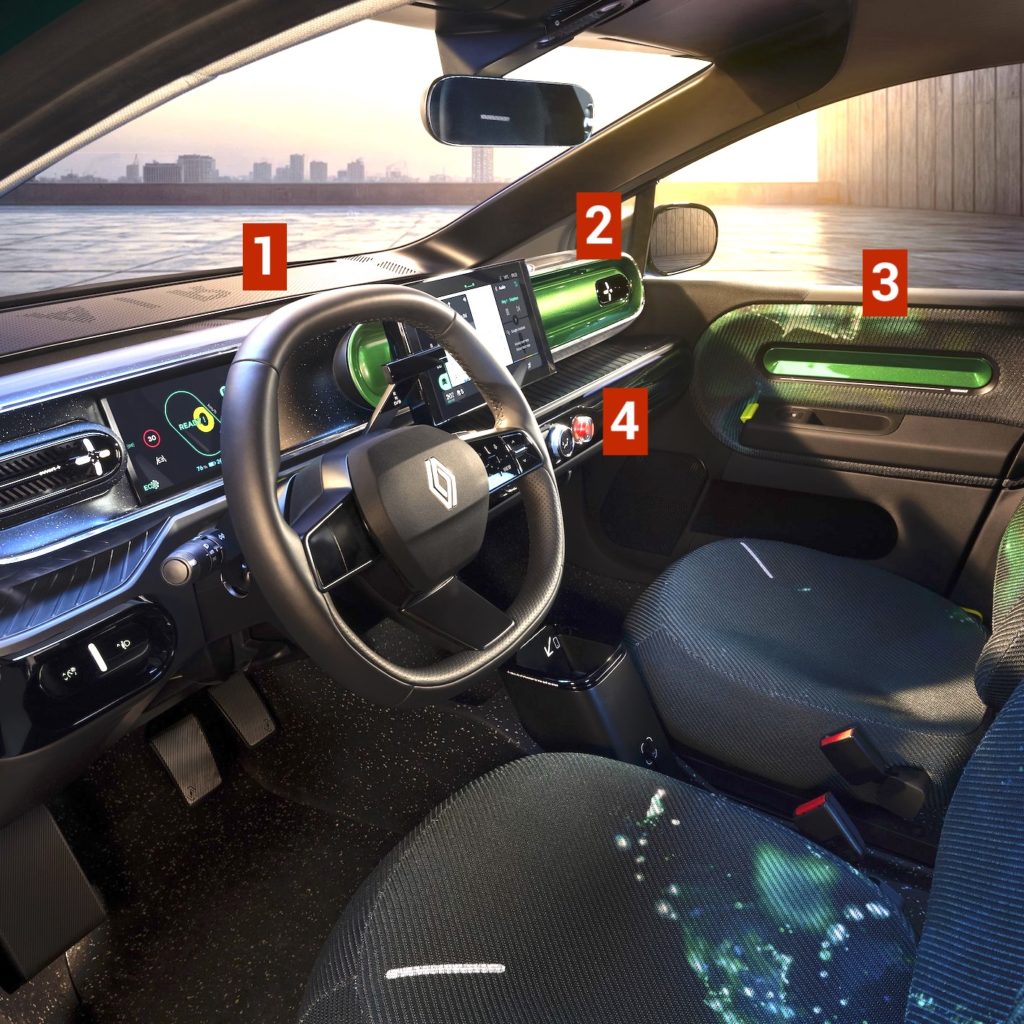
Above, in 1 : the “AIR” lettering behind the base of the windscreen. In 2: the color of the dashboard matches the exterior color. In 3: the semi-oval shape of the first-generation door medallion, elegantly reinterpreted on Twingo 2026. In 4: flat storage under the dashboard. The clown nose of the first-generation hazard light control has disappeared, but is still treated in an original way, as the red control is encapsulated in a translucent bubble alongside the ventilation controls.
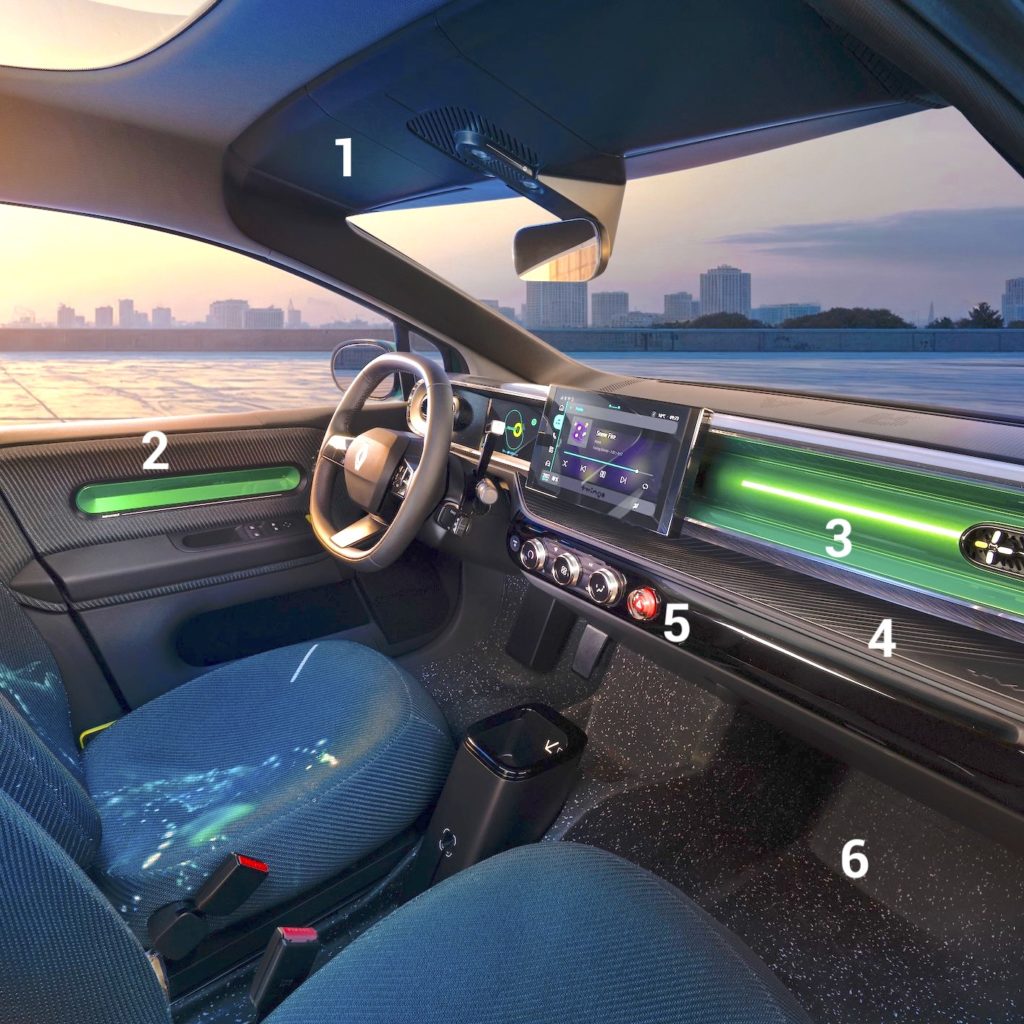
The dashboard supports the small 7-inch instrument display facing the driver and the 10.1-inch central display, both of which feature new graphics. In 1: the sun visors integrated into the decor that hides the windshield surround and A-pillars. In 2: the on-board body color. In 3: Ditto for the body of the dashboard. In 4: flat storage that we hope will be practical… In 5: the hazard-light control. In 6: the linen-based floor.
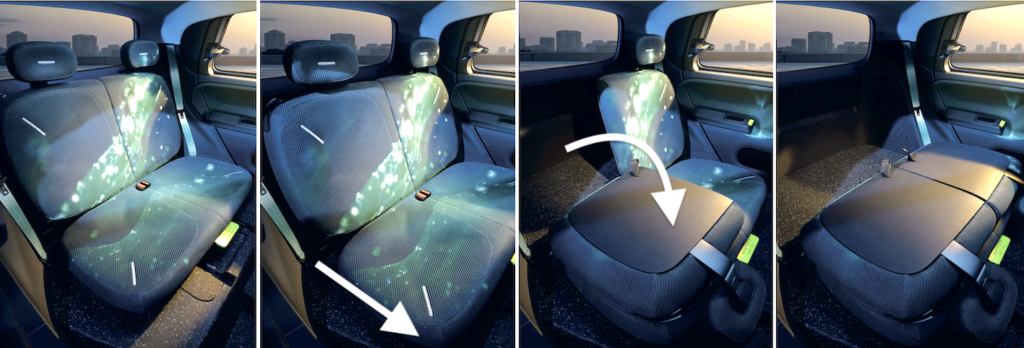
It’s a pleasant surprise: the 2026 Twingo reinterprets the rear bench of the 1993 version. The rear bench features two seats with folding backrests. The seat slides forward to increase trunk space, or backwards to increase habitability. The large yellow control in the center (below) recalls the green bent-tube lever of the first generation.
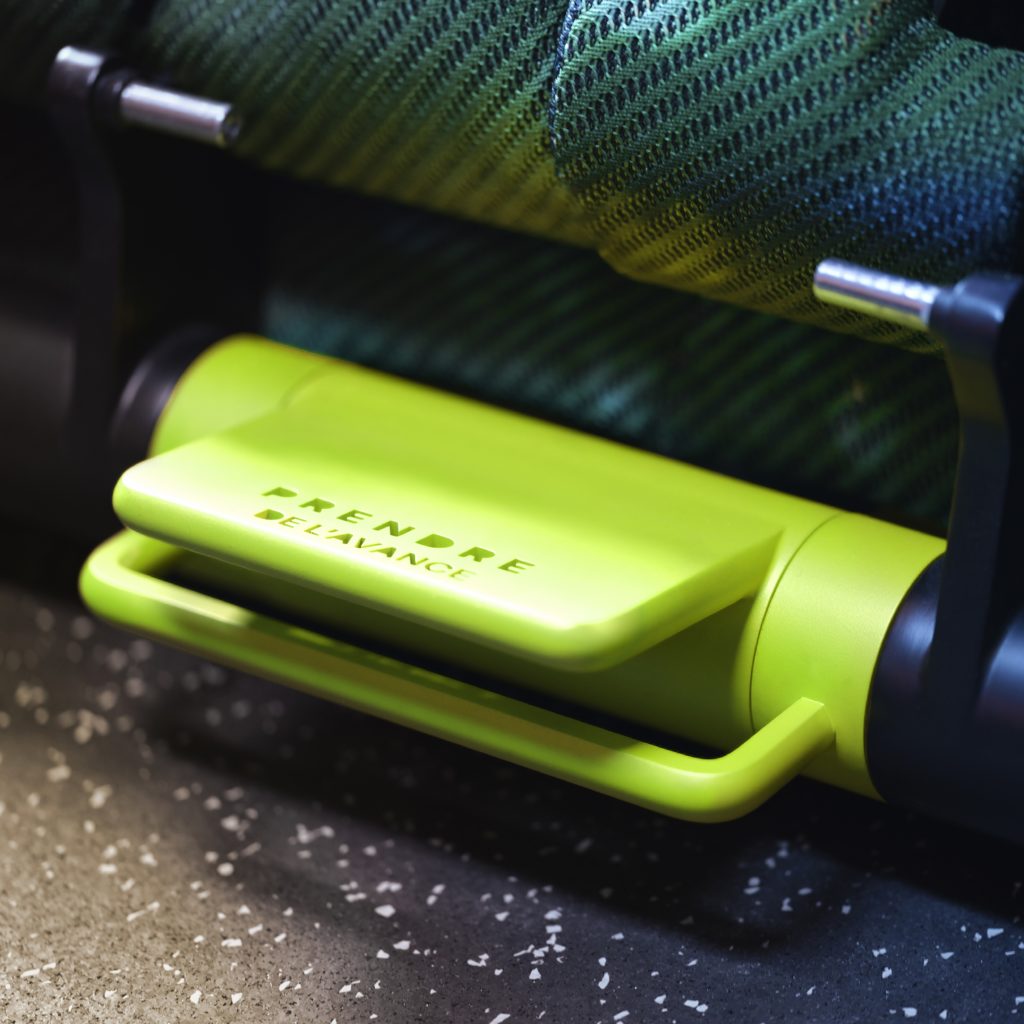
A selling price of less than €20,000 obviously suggests a lower battery input than for compact sedans. Logically, Twingo is an urban and suburban car. It evokes this mischievously with a seat adjustment knob that plagiarizes a skateboard wheel. And good wheels are needed under the chairs of designers who have to move fast: the project will ultimately be developed in just two years. And on its own, without the desired partnership with Volkswagen and its ID2. Externally, if it seems to you that there’s nothing new to report compared with the concept car unveiled less than three months ago in Paris, you’d be wrong, because the design evolutions made to the Twingo’s skin are far from negligible.
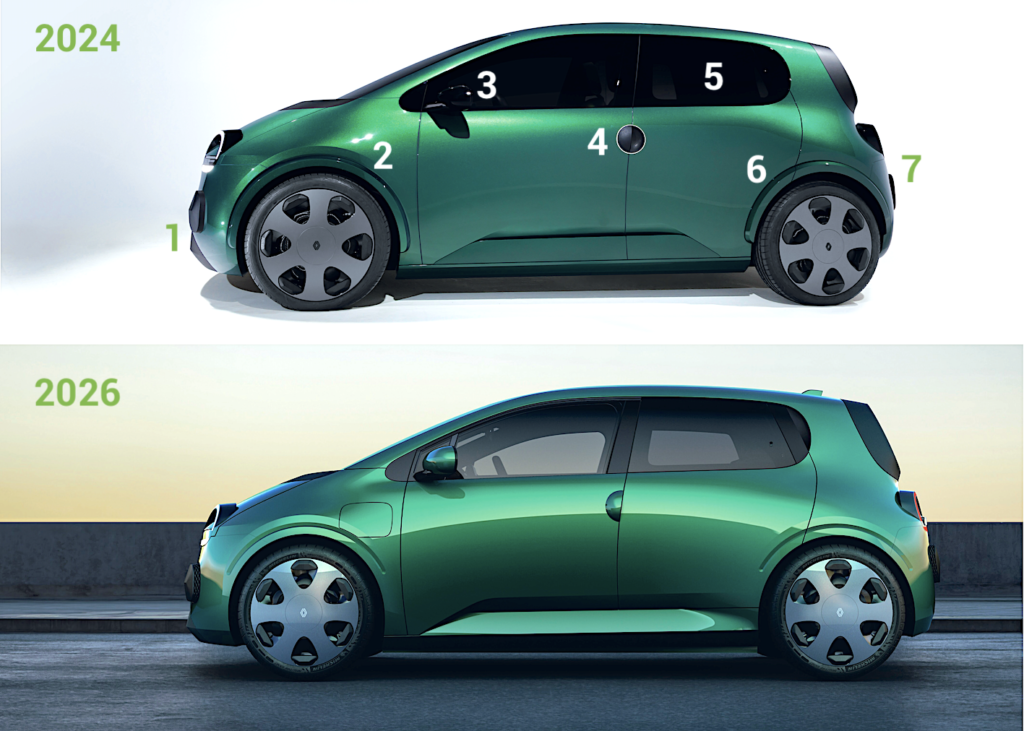
Above, in 1: the shield has been reworked for standards and approvals. Note the bumper with 3D support. In 2: the wing embossing has been modified, and we note the appearance of the charging hatch. In 3: a fenestron appears upstream of the descending front door window. In 4: the handle is redesigned and no longer illuminated. In 5: the rear door window (the Twingo 2026 has four doors) does not drop down, but is of the tilting type as on the ex-Citroën Cactus. In 6: the rear wing moulding is modified. In 7, the interior of the lights (not visible here) has been reworked, as have the bumper and bumpers.
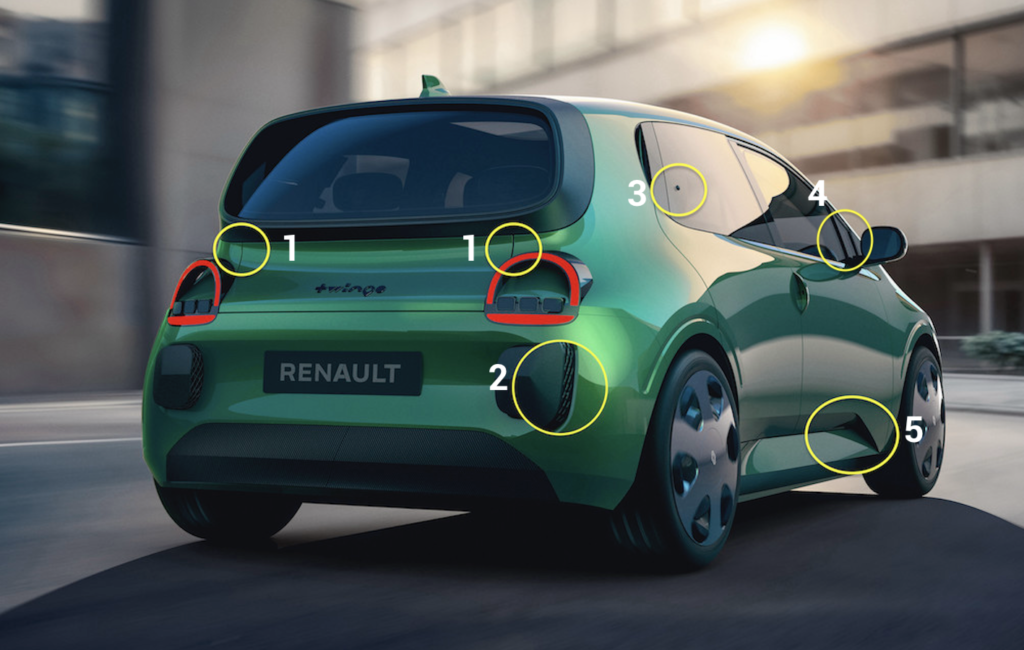
In 1: the trunk opening is narrower and the cut-out does not go around the round lights as on the first generation. In 2: the bumpers have changed shape and are based on a 3D-printed structure. Possible in series production? In 3: the door handle is integrated into the pillar, and the small black circle no doubt hides the attachment for the rear window opening. In 4: a small window is integrated into the base of the rear-view mirror, proof that this is the door of the production model. In 5: The embossing on the lower section is quite sophisticated and very dynamic, breaking up the rather fluid, edge-free design of the whole. Series production possible?
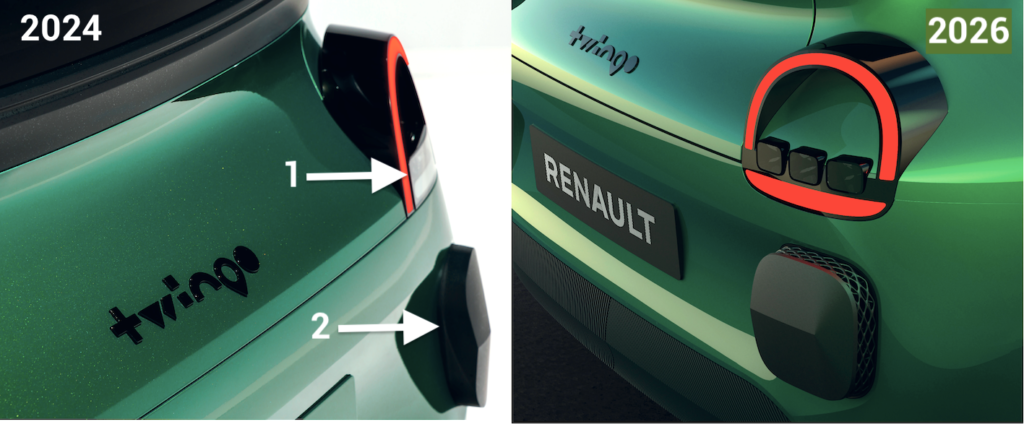
Above, the lighting signature has changed little. Note, however, in 1: a modification to the rear lights, with the addition of three interior modules in place of a glass pane on the 2024 concept. In 2: the rear bumpers are also based on a 3D-printed structure.
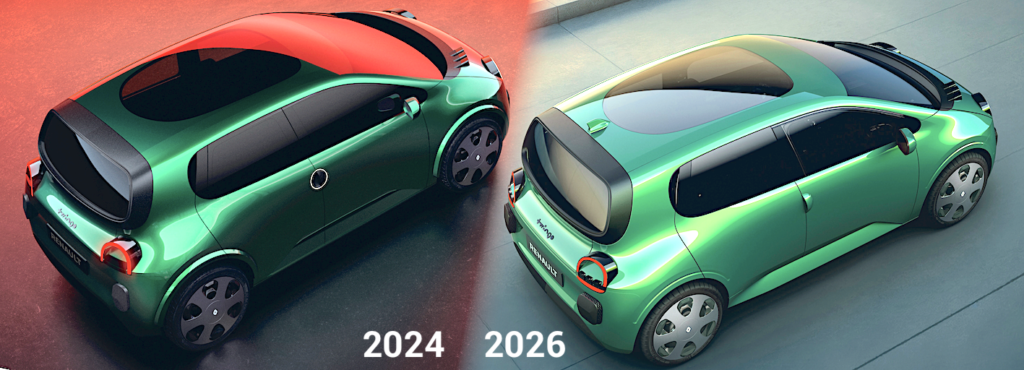
Above, Renault announces that it has reduced the curvature of the rear wing. In conclusion, the Twingo 2026 design team has done a fine job: respecting the Twingo’s DNA on board the next generation, all adapted to today’s constraints and the era of digital display. The overall look is cosseting, much more so than a 1993 Twingo, and let’s hope the series doesn’t stray too far from the rather flattering choice of materials and colors…
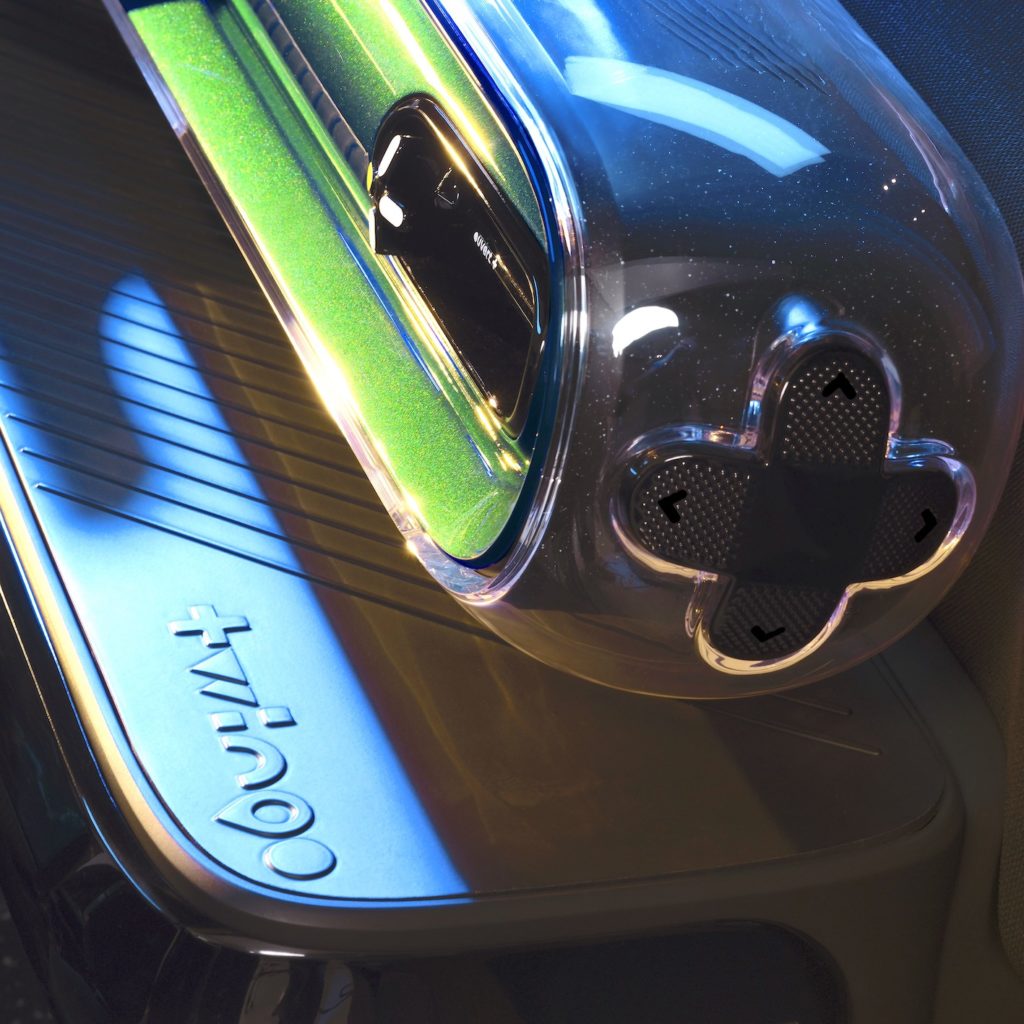
BONUS: THE 1993 TWINGO VERSUS THE 2026 TWINGO
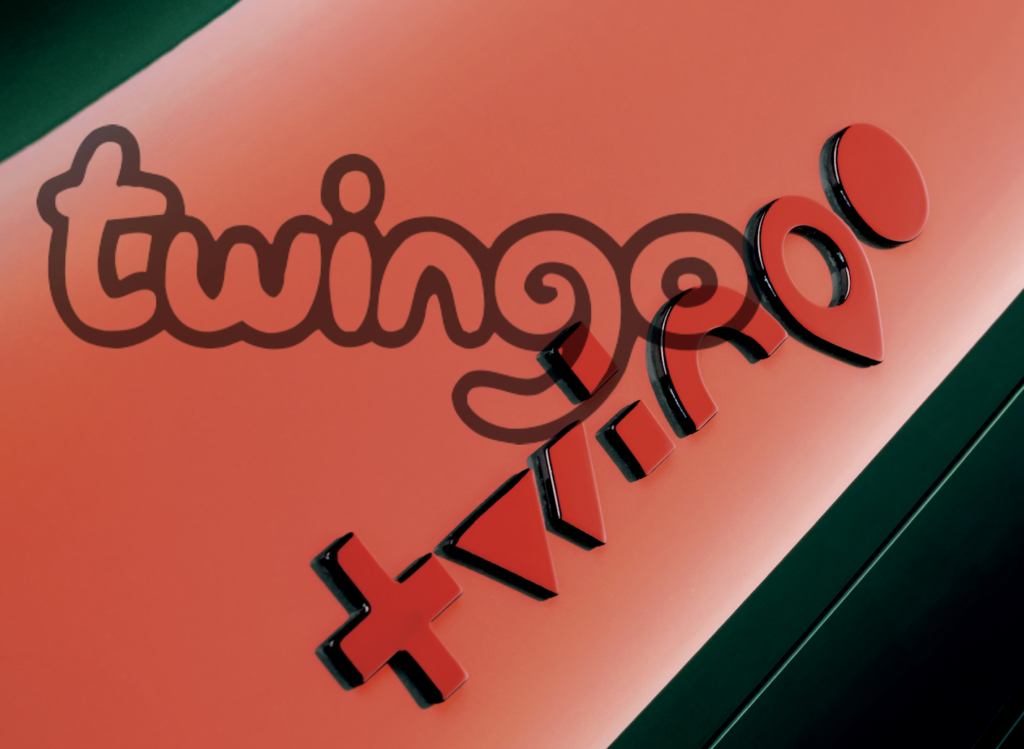
Like that of the original 1993 Twingo, the 2026 version’s logo has undergone a great deal of graphic work. For example, the “T” is now symbolized by a “+” sign, and the “G” could almost be used as a trunk release button!
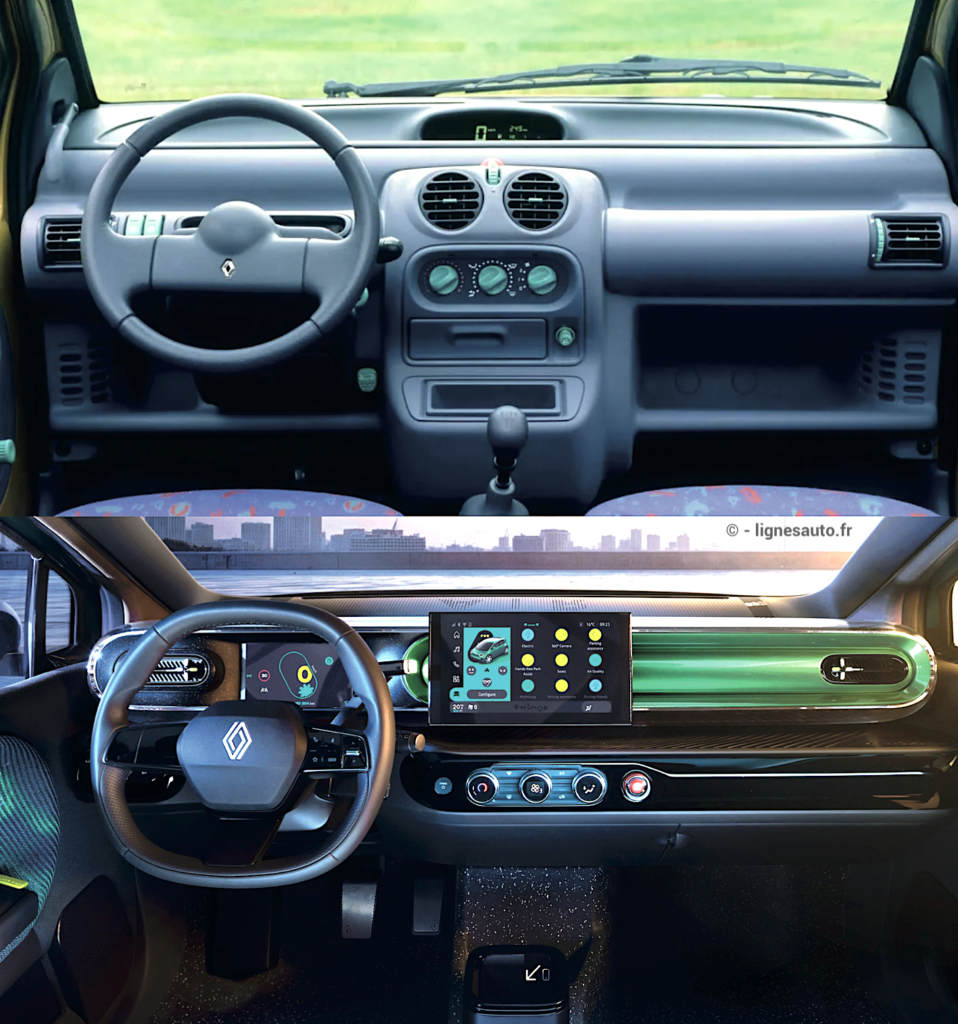
Above, the common denominator is the horizontal architecture of the dashboard. The 2026 takes up the idea of the oblong shape and pushes it quite far, right down to the air vents. Below, is it a different viewing angle or a reality: the steering column seems less vertical on the Twingo 2026 than on the 1993 model…
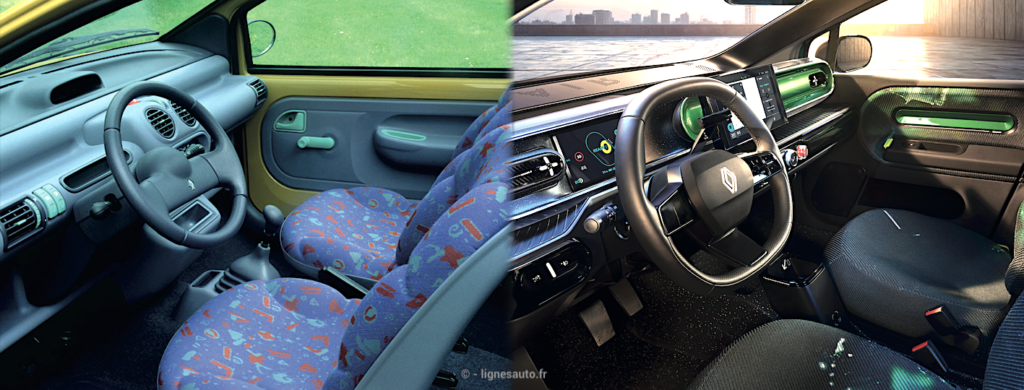
Below, the upholstery of the 1993 Twingo prototypes (right) took some time to find its production definition. On the left, the upholstery of the Twingo 2026 pays tribute to the various special series of the original Twingo.
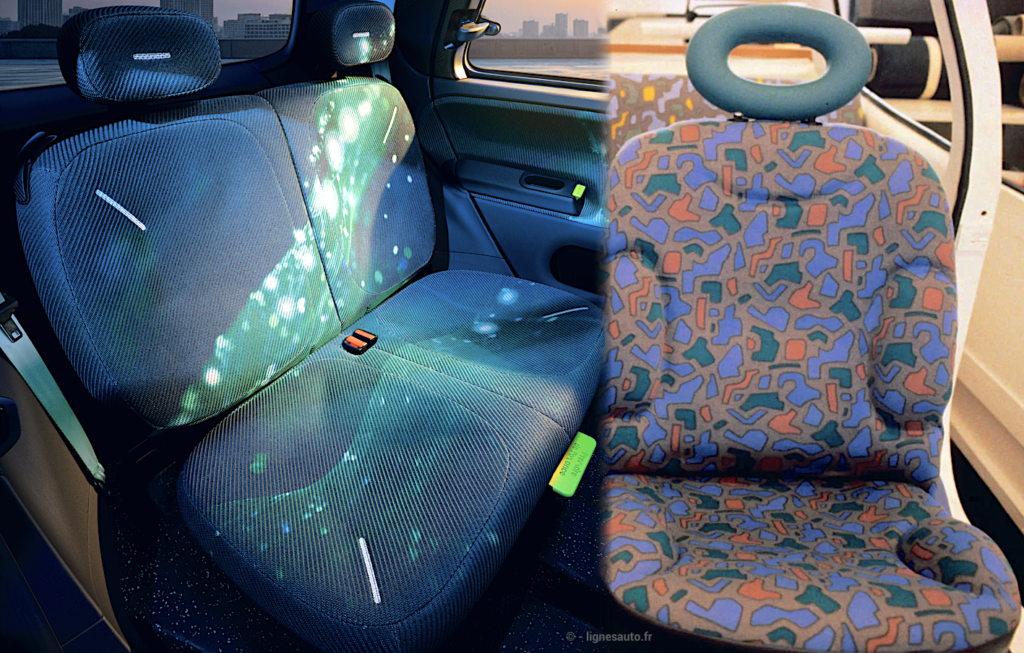
Below, we’re extremely disappointed: the two sumos taken on board the first generation Twingo by the inimitable Dingo photographer (left) are no longer present… Joking aside, the next generation won’t skimp on comfort and space on board, despite its reduced overall dimensions.
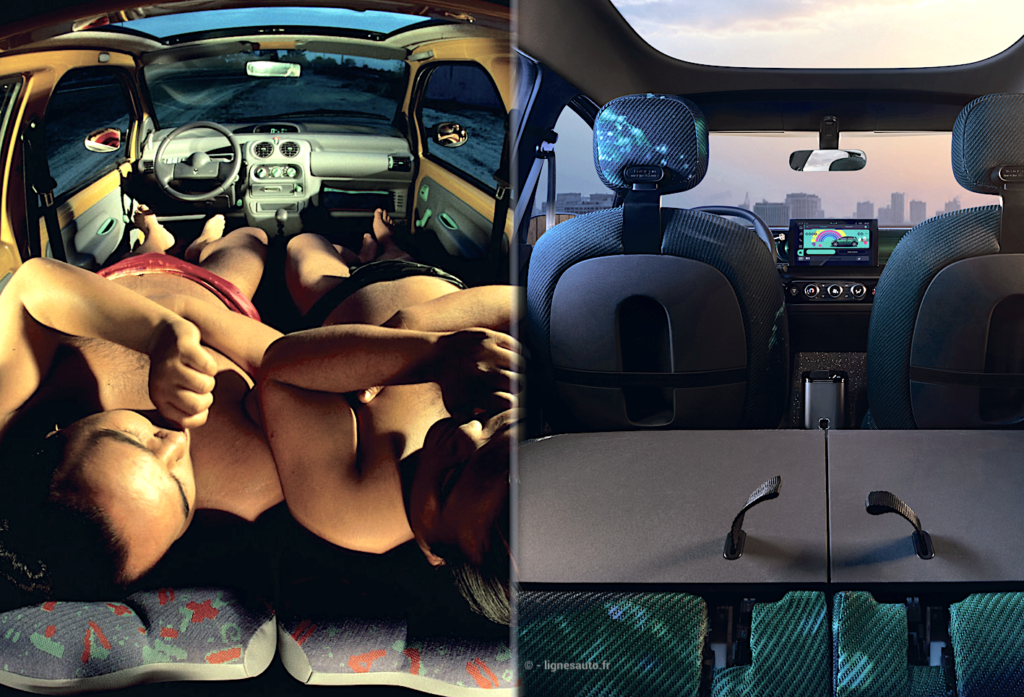
The clown nose has been replaced by a control encapsulated in “a translucent bubble”. On the other hand, will the original skateboard wheel-like seat adjuster be carried over to series production? We certainly hope so!
